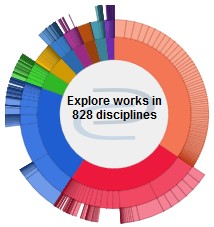Degree Name
Master of Arts (MA)
Semester of Degree Completion
1983
Thesis Director
John J. Rearden
Abstract
Learned helplessness is a psychological concept that describes the subsequent escape-avoidance behavior of experimental subjects who are exposed to uncontrollable stressors. Subjects after treatment are unable to respond in situations where escape is possible. Two major theorists, Seligman and Weiss, have proposed explanations concerning the phenomena. Seligman feels that the subject is unable to respond due to the fact that the exposure to an uncontrollable stressor has caused him to learn to be "helpless". Weiss feels that the inability to respond can best be described by alterations in the subject's brain neurochemistry, specifically the neurotransmitter norepinephrine. This paper is an attempt to verify the J. M. Weiss theory of learned helplessness with goldfish.
Seventy-two experimentally naive goldfish were randomly assigned to the experimental conditions: A no shock control, conditioning, inescapable shock, and a group receiving inescapable shock and conditioning. These experimental conditions were tested at six different levels of increasing shock duration. The first three shock durations were at 6 volts and the longer three durations were at 10 volts. Twenty fish that received conditioning as part of their treatment had the number of escapes and avoidances tabulated for each of their conditioning trials. After each subject received its experimental condition it was immediately sacrificed and had its brain extracted. The brain was then assayed for three neurochemicals: norepinephrine, dopamine and epinephrine using High Pressure Liquid Chromatography with electrochemical detection.
The experimenter found for 72 subjects an overall mean of 460 ng/g and standard error of 18.8 ng/g for norepinephrine and a mean of 180 ng/g and a standard error of 8.3 ng/g for dopamine. In only 44 percent of the 144 samples was it possible to detect at least trace amounts of epinephrine. The four by six factorial failed to detect an overall significant difference among the four learned helplessness treatment groups for both norepinephrine and Dopamine. Orthogonal contrasts comparing the groups also found nonsignificant differences. The six shock duration levels did produce significant main effect differences for both norepinephrine and dopamine. But since the apparent inverted quadratic function applied to the no shock controls, this finding is probably an artifact of different sized fish used at different levels of shock duration.
The partial correlation between amount of norepinephrine and dopamine found in fish brains adjusted for brain weight was r (69) = .279, p = .009.
Nonsignificant results were found when correlating the two neurochemicals to trials, escapes and avoidances. Comparisons of the two groups that received conditioning on avoidances, escapes and the number of fish achieving the criteria of two avoidances were nonsignificant. Proposals for future neurotransmitter depletion research using goldfish were made.
Recommended Citation
Misunis, Roderick J., "The Relationship Between Whole Brain Catecholamine Depletion in Carassius auratus and the Exposure to Inescapable Shock in a Learned Helplessness Paradigm" (1983). Masters Theses. 2890.
https://thekeep.eiu.edu/theses/2890
Included in
Animal Experimentation and Research Commons, Biochemistry Commons, Neuroscience and Neurobiology Commons, Psychology Commons




